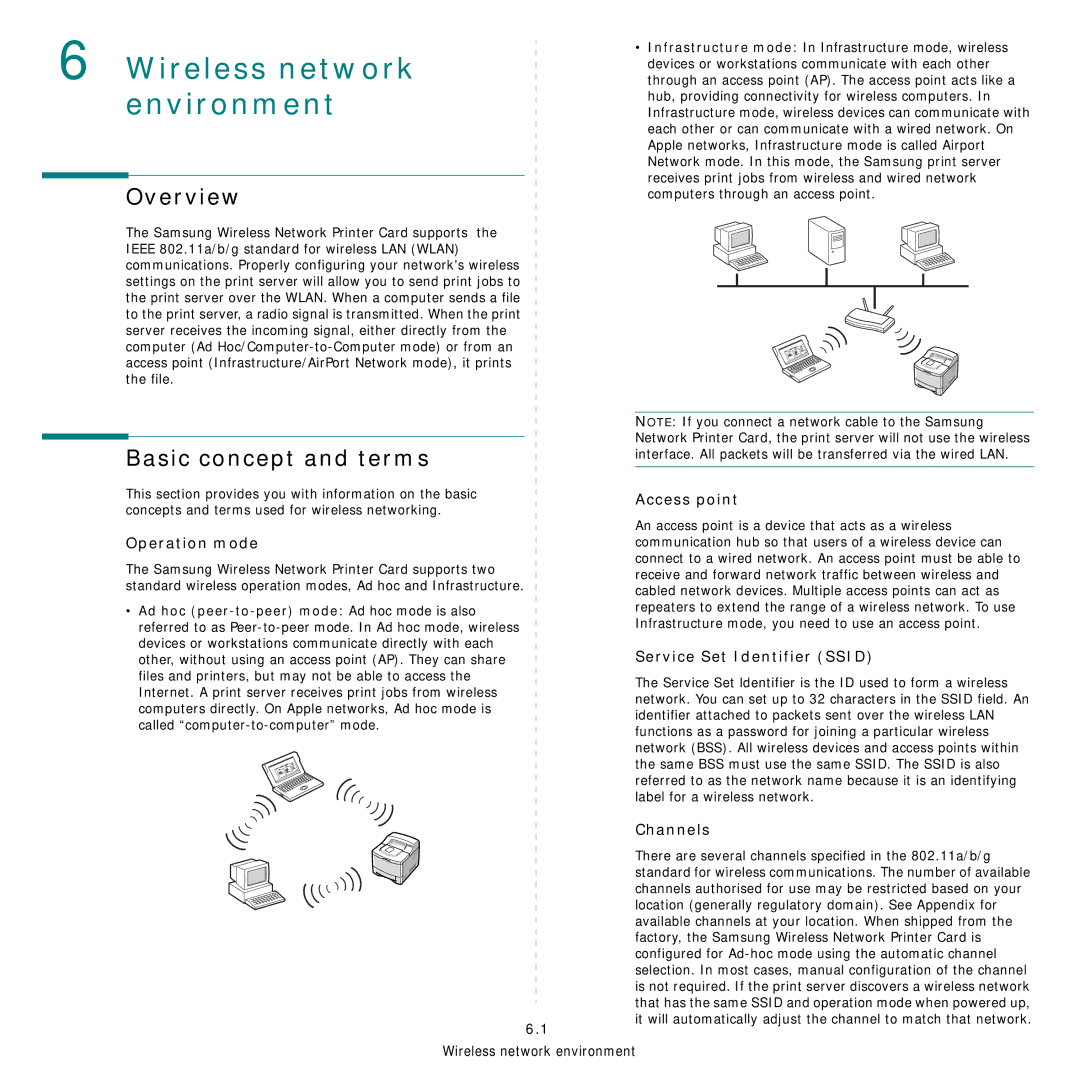
6 Wireless network environment
Overview
The Samsung Wireless Network Printer Card supports the IEEE 802.11a/b/g standard for wireless LAN (WLAN) communications. Properly configuring your network's wireless settings on the print server will allow you to send print jobs to the print server over the WLAN. When a computer sends a file to the print server, a radio signal is transmitted. When the print server receives the incoming signal, either directly from the computer (Ad
Basic concept and terms
This section provides you with information on the basic concepts and terms used for wireless networking.
Operation mode
The Samsung Wireless Network Printer Card supports two standard wireless operation modes, Ad hoc and Infrastructure.
•Ad hoc (peer-to-peer) mode: Ad hoc mode is also
referred to as
6.1
•Infrastructure mode: In Infrastructure mode, wireless devices or workstations communicate with each other through an access point (AP). The access point acts like a hub, providing connectivity for wireless computers. In Infrastructure mode, wireless devices can communicate with each other or can communicate with a wired network. On Apple networks, Infrastructure mode is called Airport Network mode. In this mode, the Samsung print server receives print jobs from wireless and wired network computers through an access point.
NOTE: If you connect a network cable to the Samsung Network Printer Card, the print server will not use the wireless interface. All packets will be transferred via the wired LAN.
Access point
An access point is a device that acts as a wireless communication hub so that users of a wireless device can connect to a wired network. An access point must be able to receive and forward network traffic between wireless and cabled network devices. Multiple access points can act as repeaters to extend the range of a wireless network. To use Infrastructure mode, you need to use an access point.
Service Set Identifier (SSID)
The Service Set ldentifier is the ID used to form a wireless network. You can set up to 32 characters in the SSID field. An identifier attached to packets sent over the wireless LAN functions as a password for joining a particular wireless network (BSS). All wireless devices and access points within the same BSS must use the same SSID. The SSID is also referred to as the network name because it is an identifying label for a wireless network.
Channels
There are several channels specified in the 802.11a/b/g standard for wireless communications. The number of available channels authorised for use may be restricted based on your location (generally regulatory domain). See Appendix for available channels at your location. When shipped from the factory, the Samsung Wireless Network Printer Card is configured for
Wireless network environment
